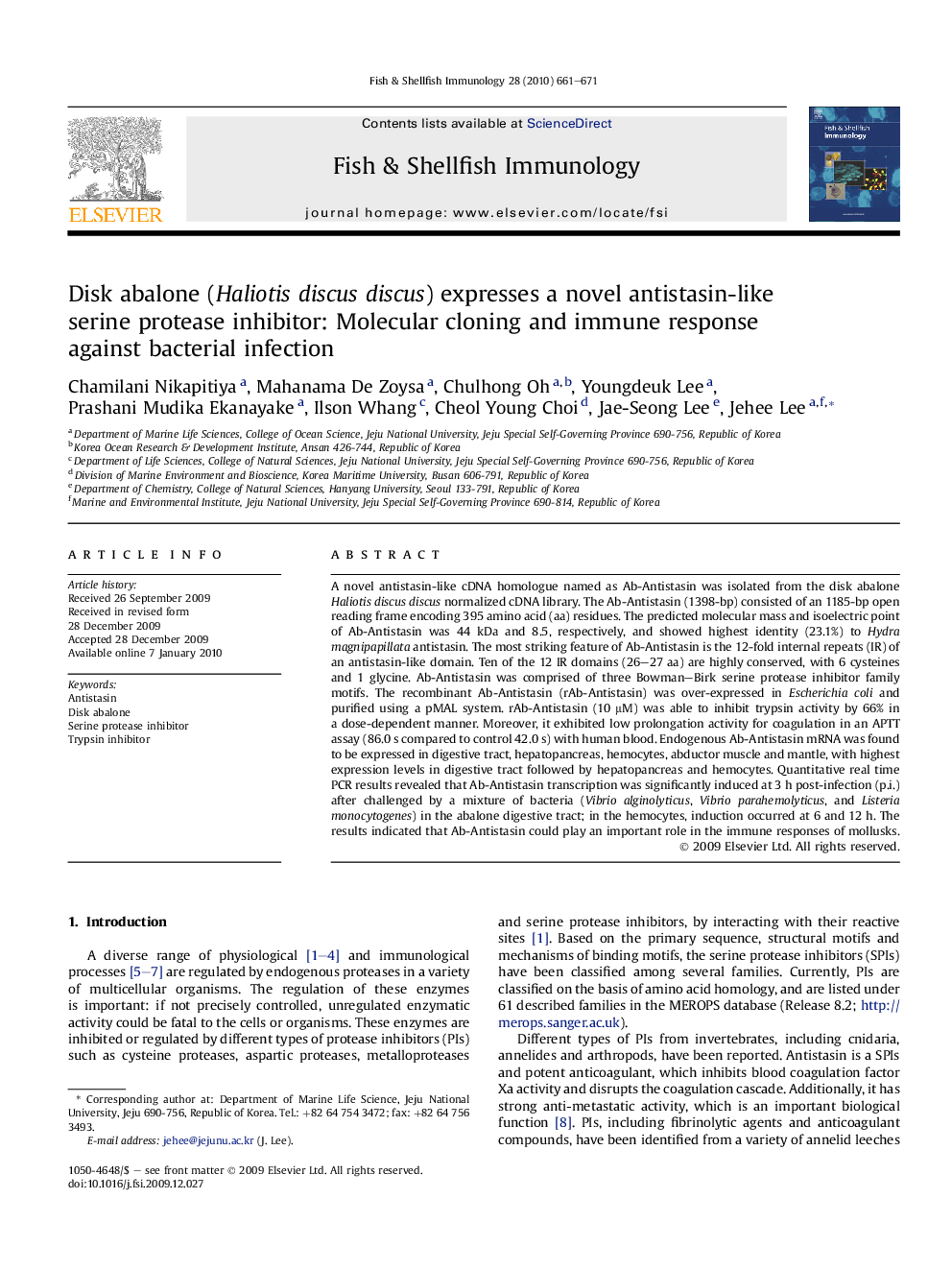| Article ID | Journal | Published Year | Pages | File Type |
|---|---|---|---|---|
| 2432593 | Fish & Shellfish Immunology | 2010 | 11 Pages |
A novel antistasin-like cDNA homologue named as Ab-Antistasin was isolated from the disk abalone Haliotis discus discus normalized cDNA library. The Ab-Antistasin (1398-bp) consisted of an 1185-bp open reading frame encoding 395 amino acid (aa) residues. The predicted molecular mass and isoelectric point of Ab-Antistasin was 44 kDa and 8.5, respectively, and showed highest identity (23.1%) to Hydra magnipapillata antistasin. The most striking feature of Ab-Antistasin is the 12-fold internal repeats (IR) of an antistasin-like domain. Ten of the 12 IR domains (26–27 aa) are highly conserved, with 6 cysteines and 1 glycine. Ab-Antistasin was comprised of three Bowman–Birk serine protease inhibitor family motifs. The recombinant Ab-Antistasin (rAb-Antistasin) was over-expressed in Escherichia coli and purified using a pMAL system. rAb-Antistasin (10 μM) was able to inhibit trypsin activity by 66% in a dose-dependent manner. Moreover, it exhibited low prolongation activity for coagulation in an APTT assay (86.0 s compared to control 42.0 s) with human blood. Endogenous Ab-Antistasin mRNA was found to be expressed in digestive tract, hepatopancreas, hemocytes, abductor muscle and mantle, with highest expression levels in digestive tract followed by hepatopancreas and hemocytes. Quantitative real time PCR results revealed that Ab-Antistasin transcription was significantly induced at 3 h post-infection (p.i.) after challenged by a mixture of bacteria (Vibrio alginolyticus, Vibrio parahemolyticus, and Listeria monocytogenes) in the abalone digestive tract; in the hemocytes, induction occurred at 6 and 12 h. The results indicated that Ab-Antistasin could play an important role in the immune responses of mollusks.
